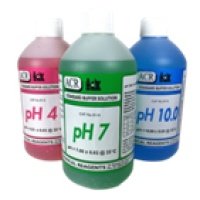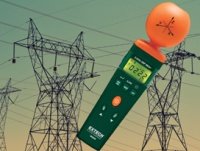Why Use A Carbon Dioxide Monitor At Home

What is CO2 & Why Monitor It?

Figure 1 Chemical Makeup of Carbon Dioxide (CO2 )
Carbon dioxide is a common, colourless gas comprising one carbon atom covalently bonded to two oxygen atoms.
High CO2 levels within a home can indicate inadequate air ventilation relative to indoor occupant density and metabolic activity.
High levels of indoor CO2 will cause you to feel drowsy, sluggish and can trigger headaches.
Sources of CO2
There are several sources of carbon dioxide – some the result of human activity, while others are naturally occurring.
Human-made sources: Industry, deforestation and burning fossil fuels.
Naturally occurring sources: Ocean outgassing, bush fires, decomposing vegetation/biomass and respiration. All aerobic organisms produce carbon dioxide via respiration, from the smallest aerobic bacteria to our pets, livestock and us!
In indoor environments such as the home or office, the most common cause of elevated CO2 concentrations is human activity. A combination of occupant density, room size and ventilation will determine the concentration of Carbon Dioxide.
What are the Safe Levels of CO2 Indoors?
See table 1 below for carbon dioxide concentrations and the associated effects on occupants.
Level (ppm) |
CO2 effects on occupants |
|
250-400 |
The typical CO2 concentration of outdoor air. |
|
400-1000 |
Concentrations usually associated with occupied indoor spaces with acceptable air ventilation. |
|
1000-2000 |
This CO2 level is associated with the onset of drowsiness and complaints of poor air quality. |
|
2000-5000 |
Expect stale or stuffy air resulting in drowsiness, loss of attention and concentration. In some scenarios, occupants may experience slight nausea and an increased heart rate. |
|
5000 |
The 8-hour time-weighted average limit as defined by SafeWork Australia (Average over 8-hours of exposure). |
|
>40,000 |
Immediately dangerous to life or health. |
Figure 1 Carbon dioxide concentrations and the effects on occupants
As a general rule of thumb, aim to keep your indoor CO2 levels lower than 1000 ppm.
Example of CO2 Levels
An Instrument Choice Scientist chose to set up the Laser Egg + CO2 in their office for a couple of days to determine carrying CO2 levels. This is what happened:
CO2 levels start to increase almost as soon as the office is in use and exceed the optimal range. CO2 levels quickly return to an optimal level when the office is vacant. It might be a good idea to open a window during the day!
CO2 Monitors for the Home
Your Instrument Choice Scientists selected three representative examples of Carbon Dioxide indoor air quality monitors they recommend for use at home.
|
|
|
|
Extech CO220 Desktop Indoor Air Quality CO2 MonitorProduct code: IC-CO220
In a nutshell: The IC-CO220 is an easy-to-use option that senses CO2 concentrations and displays results on an extra-large LCD. Special features & capability: The following functions help users track historical data and take swift corrective actions when CO2 levels begin to increase:
CO2 Range: 0 to 9999ppm CO2 Accuracy: ± (5%rdg +50ppm) from 0 to 2000ppm CO2 Resolution: 1ppm Also Measures: Air temperature and relative humidity data. Calculates TWA (8 hour Time Weighted Average) and STEL (15-minute Short Term Exposure Limit), dew point and wet bulb. |
Conclusion
Monitoring indoor air quality and carbon dioxide levels in a home or office is an excellent means of increasing your occupants' focus, productivity, and overall comfort.
For more information on CO2 or other indoor air quality meters, speak with an Instrument Choice Scientist; Call 1300 737 871 or email [email protected].
Also interesting
Keeping your pH meter calibrated is the best way to ensure consistent and accurate pH measurements. A pH buffer solution is essential to calibrate a pH meter accurately.
Find out where to buy pH buffer solutions here

The Instrument Choice Team of Scientists regularly reviews new and popular products, so when searching for the perfect scientific instrument for your application, you can make more informed decisions.
This edition evaluates the Extech 480836 EMF Strength Meter, detailing the meter's noteworthy features, specifications and provides examples of best applications.
For a meter that's outstanding for assessing EMF, check out our review of the Extech 480836 EMF Strength Meter






